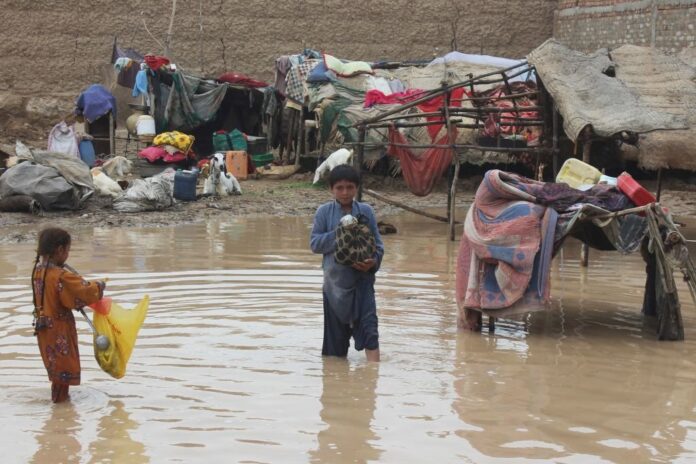A pandemic outbreak assessment report has warned that children and the disabled persons are at high risks of contracting an infectious disease, leptospirosis, in the regions affected by severe floods in the country.
Leptospirosis is caused by leptospira and transmitted to humans from domestic animals, and characterised by jaundice and fever, explains the report.
According to a press release, issued by SAARC-ASEAN Post-Doctoral Academia, the report, named Aurangzeb Hafi’s DESPO Appraisal, warns of the worsening situation in the aftermath of heavy monsoon rains and floods, affecting at least one-third areas of Pakistan.
The floods carry high epidemics, putting the children and the disabled persons at high risks. These risks may include lifelong ailments, DESPO’s Principal Investigator (P.I.) Prof. Aurangzeb Hafi notifies to the UN agencies, National Disaster Management Authority (NDMA) and the authorities concerned in the flood-affected areas.
According to the appraisal, malnutrition and mal-absorption rates in children, particularly those in temporary camps, is becoming thrice the emergency threshold, measured as per the UN’s WFP-WHO laid parameters.
The report says parts of the country now stand on verge of bearing the consequential outbreaks of the tetra-effect aftermath of floods, in terms of severe health problems as well as socio-economic issues.
According to the parameters, adopted in ACAPS Summary Sheet of Global Emergency, the DESPO Disaster Impact Measurement System (DIMS), as well as in view of the updated data analysis of the 2022 floods, all the core-indicators suggest that Pakistan bears the emergency zone’s hallmarks.
“The UN agencies, the rights groups and others are required to remain vigilant in order to save the precious lives of the desperate and lonely children,” adds the report.
In many hard-hit areas of Pakistan, poorly maintained sewers are overflowing, carrying along heavy toxins and remnant industrial waste, thus contaminating the drinking water supplies. The floodwater in many areas bears high toxicity concentrations, and strong indications suggest the presence of arsenic, along with a considerable number of other toxins, coming from industrial sewers. And if the situation prevails for another 10-15 days, it would be emerging as a host to a number of hazardous ailments, especially among pregnant women and children.
The present disaster holds fast strong potentiality to carry forth a considerable number of leptospirosis, leading to severe pulmonary haemorrhage syndrome (PHS), lymphocytic chorio-meningitis (LCMV), acute cutaneous leishmaniasis (ACL) and hantavirus pulmonary syndrome.
The alert warns of more cases bearing the disease-pattern in near future. Major indicators have been identified, suggesting the strong potential of pandemic outbreaks such as cholera and diarrheal diseases that are directly linked to cell mediated immunity (CMI), mal-nutrition and mal-absorption.
The alert urges immediate provision of safe drinking water, emergency hygiene-kits and secure sanitation to the affected people. The disabled should be compassionately dealt with and taken care of. Extraordinary attention must be paid to save the displaced children and pregnant women.
Professor Dr. Aurangzeb Hafi, who compiled and presented the assessment report, has long been working for epidemiological risk assessments and pandemic outbreaks’ threat-indications in disastrous emergencies and cataclysmic situations. He was the head of the projects concerning the disabled population of refugee camps in Sri Lanka, following the Asian Tsunami of 2004.























